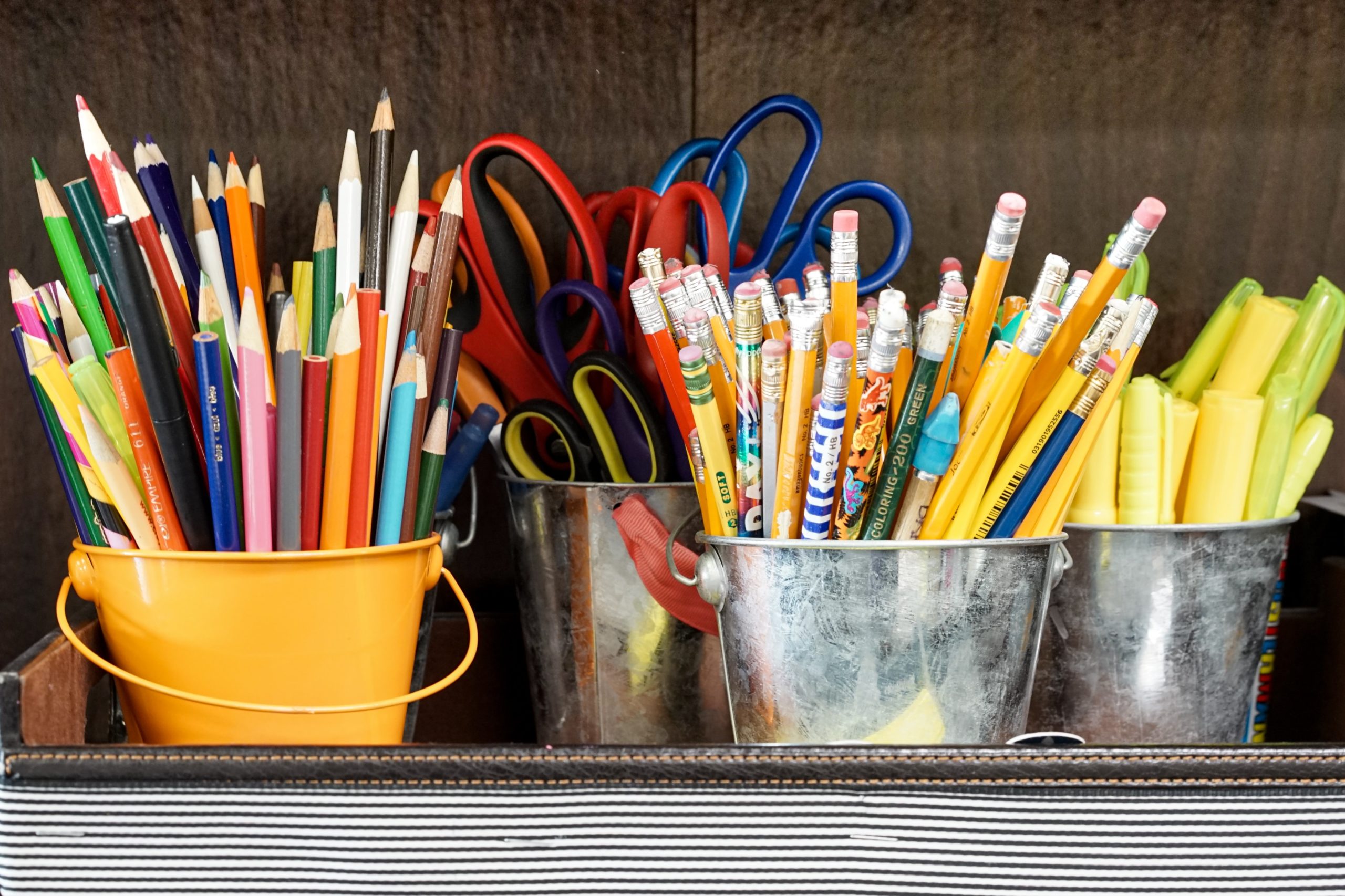

Education policy should spur the creation of new schools and learning models for job-oriented education.
RECOMMENDED READING
For over a decade now, states across the country have coalesced around the goal of “college and career readiness,” as if preparation for one is preparation for the other. Some states, like my home state of Missouri, come right out and say as much. The state department of education’s website describes the basis for establishing what students should know as “the expectation that all students will be ‘College and Career Ready,’ and that the standards for successful entry into the workplace are the same as those required for successful entrance into a college or university” (emphasis in original).
But what if this assumption isn’t true? It is not at all clear to me that the skills and knowledge necessary to succeed in college are the same as those needed to succeed the workforce. As a former high school English teacher, I think of the investment to help students master longform writing. For students heading to college, it took quite a bit of practice to master, but it was worth it; writing is essential for a college student. But most students who were entering the workforce after high school were probably never going to need to structure and write a 3,000-word essay. This is but one example.
States might feel uncomfortable establishing different standards for some students on a more academic “college” track and others on a more practical “career” track. But if they do not, they risk watering down preparation for both. Kids heading to college will not get the time and practice that they need on the skills and knowledge they need to succeed there, and kids heading into careers will not either.
Thanks to the work of scholars like Charles Glenn and Ashley Rogers Berner, the idea of educational pluralism has gained a foothold in education policy discussions in America. The idea, put simply, is that there is no one best way to educate children, so the wisest course of action is to allow for the proliferation of lots of different types of schools. Some might focus on STEM subjects and infuse classrooms with technology. Others might embrace the classics and keep technology use to a minimum. Some might embrace student-centered, progressive pedagogy. Others might embrace strict discipline and direct instruction.
“Creating meaningful opportunities for students outside of the traditional college pathway is essential for developing an American society that better shares its prosperity.”
Too often, though, discussions of educational pluralism can spend their time talking about diversity of the means of education. We want schools doing different things in the classroom—trying different curricula, utilizing different schedules, and sourcing teachers differently. But it is just as important to think about a pluralism of ends. We want schools that have different goals for what students should know and be able to do when they finish—some focused on college preparation, others on marketable skills.
Creating meaningful opportunities for students outside of the traditional college pathway is essential for developing an American society that better shares its prosperity. Accepting that different students are headed in different directions after their time in high school requires us to embrace a genuine pluralism. Merely developing new tracks in conventional schools is unlikely to be enough. The United States will need different schools doing different things to accomplish different ends.
A Tour Across Innovative Education Models
Across the country, innovative education models are emerging that supply examples of what schools in a more pluralistic system might look like.
Birmingham, Alabama, is the home of Build UP, a workforce development high school. Build UP is a six-year program designed to cover the traditional years of high school and community college. Students spend half of their time in academic classes and half of their time in apprenticeships. After mastering key skills, they set to work rehabbing blighted duplexes in the neighborhood around the school. Students graduate with a high school diploma, an associate’s degree aligned to industry standards and expectations, and keys to one of the rehabbed properties. The home is not entirely free, but paid through a subsidized, zero-interest mortgage. Graduates can choose to live in the home or use it as a rental property.
In Southern California, the Da Vinci Schools, a network of five public charter schools, offers a project-based school curriculum that focuses on the real-world application of knowledge. Educators in the school have worked with industry representatives from more than 100 firms, including Boeing, Northrup Grumman, and SpaceX to help guide decisions around curriculum and the projects and activities that students undertake. Rather than passively learning about biology or anatomy, for example, students participate in a “Da Vinci Medical Hospital” project where they are given a fictional patient to diagnose and then present both their diagnosis and reasoning to a panel of real doctors. Work-based learning extends beyond the classroom as well. More than two-in-five Da Vinci students participate in internships or work experiences during their school years.
In Louisiana, thousands of students take advantage of the state’s course choice program. These students are enrolled in traditional K–12 public schools but have the flexibility to take a portion of their education funding to outside providers and access individual courses that their school doesn’t offer. Even a short perusal of the program’s website shows hundreds of potential classes offered both online and in-person across a variety of topics. Baton Rouge Community College, for instance, participates in the program and offers courses ranging from General Biology to Brake Systems. Students are able to take these courses while still attending their traditional schools and reaping all of the benefits of the traditional schooling environment.
“They are designed to be students’ first choices. But they have a different goal in mind than most schools that exist in America today.”
In each of these cases, what the schools are doing is different, but where they want students to be at the end of their education is different as well. They want students to have real practical skills that can be put to use immediately. They want students to understand the world of work and the types of knowledge and skills that are necessary to succeed there. They want students to know what businesses operate in which industries and what expectations those businesses have for people who want to work for them.
All three of these educational environments are rigorous. All are serious institutions of education that want students to learn. They are not designed for students deemed less able or whose first preferences might be for a more “academic” education. They are designed to be students’ first choices. But they have a different goal in mind than most schools that exist in America today.
If pluralism is something that we want to pursue, policies need to change. As with most things in life, it comes down to money.
The Pluralism Funding Spectrum
Given that pluralism rests on the assumption that there is no one best way to educate children, it would be unusual to propose a single funding mechanism to provide it. Perhaps it is best to think about a range of options that policymakers can use to promote pluralism, starting within the traditional public school system and then working outside it.
Course Access
As in the Louisiana example above, course access (also called “course choice”) programs can create space within the traditional public school to provide a host of courses that might not otherwise be available.
Put simply, course access programs subdivide the funding that a student receives into smaller units and allows that student to take some of that funding to outside course providers. For ease of explanation, suppose a student receives $7,000 in funding per year and takes seven classes in their school day. That money can be divided into seven $1,000 units (or $500 per semester). A state could then permit students to take two or three of those units to a local community college, a state university, or a career development location for coursework.
Course access programs are great for students, as they offer a much wider set of options to students than might otherwise be available. Schools are often unable to offer courses that only a small number of students want to take. If just a few students want to take AP biology or auto repair, the school may not be able to justify hiring a teacher and procuring all of the necessary supplies. But chances are, another institution somewhere nearby offers the course or something similar. Schools simply use the money that the student would be using in their traditional class to pay the course tuition.
Great career and technical education is expensive. Woodshops, auto repair programs, and other practical arts programs require lots of space, equipment, and staff with technical know-how. It can be hard to get all of that into a school. But there are thousands of training centers and technical and community colleges that already have it, so there is no need to reinvent the wheel. The same is true for advanced STEM courses that can be taken online through a state university. Instead of students walking into their Algebra II class during third period, they would simply walk to the library and log into class.
Course access programs are great for schools as well. As rural schools face the threat of closure and consolidation, course access allows them to offer the wide sweep of courses that larger schools and districts can. The community can remain intact, with Friday night football, the homecoming parade, and the annual school play continuing while students are able to take college courses and great career and technical education without ever leaving their local school.
Charter and Magnet Schools
Staying within the public school system, but not the traditional, residentially assigned public school, states and districts can also create the space for more innovative school types.
Magnet schools, as the name implies, are designed to draw students to them with unique and high-quality programs of study. Some are academically elite, others are focused on the performing arts, while still others are aligned to specific job types like health sciences or engineering.
Charter schools are independent public schools that answer to a charter authorizer instead of a traditional school board. Unfortunately, many school boards are utterly captured by the vested interests of the education system, making rethinking schooling verboten. Charter schools offer many of the upsides of public education (e.g., free to attend, answer to the entities that fund them, required to be transparent about performance, etc.), while avoiding many of the downsides (e.g., administrative sclerosis, special-interest capture, etc.).
“If we want to see real pluralism, and the panoply of options that it creates, we must push schools and those who authorize and manage them to take full advantage of their freedoms.”
What both charter and magnet schools need, though, is a recognition that the students attending them might have different goals than students attending traditional schools. The whole innovation of charter schooling, the charter, is designed to be a customized performance contract between the school and its authorizer. Schools don’t have to use the same metrics as traditional schools; they should be able to identify performance indicators aligned to what they are trying to accomplish and what their students are trying to achieve. Too often, charter and magnet schools have simply adopted the same narrow band of performance metrics like standardized test scores and graduation rates that every other school uses. If we want to see real pluralism, and the panoply of options that it creates, we must push schools and those who authorize and manage them to take full advantage of their freedoms.
Education Savings Accounts
If families want their children to have opportunities for internships, apprenticeships, and other real-world, out-of-classroom experiences, the existing system does not always work. Some schools, like Da Vinci, do organize such opportunities, but working through existing schools can present two important limitations. First, students are limited to the relationships and partnerships that the school is able to create. Schools like Da Vinci are great at what they do in this regard, but not every school will be so strong. If the school is the conduit for work opportunities, students might be locked out. Second, even in schools that do work experiences well, students might still want to do something else that the school has not been able to set up. Schools serve hundreds and often thousands of students, so creating tailored opportunities for every one of them is extremely challenging. This is not for lack of effort or ability; it is just a numbers game. If the school is in the driver’s seat, opportunities will be limited by the time and manpower that the institution possesses.
Restructuring funding to flow through students rather than schools would address these challenges. One promising model would be an Education Savings Account, a flexible-use spending account that parents control and can spend on allowable educational expenses. If the student wanted to enroll in an apprenticeship program or a hands-on training program at a local workforce development center, they would simply pay for it out of this account.
Education Savings Accounts could also be a place for other streams of funding to accumulate. Workforce development and job training program dollars could go in as well. These accounts could follow students throughout their education, with different amounts put in each year based on the types of programs that they are eligible for. While outside the scope of what we’re discussing here, this could start early, with childcare and then pre-K funding placed in the account first, then K–12 funding, and then whatever postsecondary support states and the federal government provide as well. It would simplify and standardize many disparate programs and create a single portal for parents to put their education benefits to use.
* * *
The United States is a big, diverse country. Its millions of schoolchildren have different needs, different goals, and different strengths and talents. Educational pluralism recognizes this fact and tries to create a system that reflects it. Rather than forcing all students into a program of “college and career” readiness that in trying to advance both goals advances neither, it accepts that not every school will work for every student and that schools should have distinct missions that families can freely choose. It is only when this space is created that schools providing great college preparation and great career preparation can thrive.
Recommended Reading
How to Fix America: Stop Pushing College
In a Dealbook feature collecting ideas from a wide variety of leaders on how to improve the country, American Compass’s Oren Cass argues for shifting our focus away from college and toward providing strong, non-college career pathways.
A Guide to College-for-All
The college-for-all model fails most Americans in favor of a “Fortunate Fifth” who proceed smoothly from high school to college to career.
Embedding Employers in Education
Employers can take an active part in preparing high school students for the workforce.












